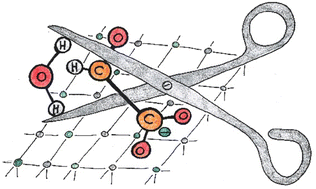Environ. Sci.: Atmos., 2023, 3,1396-1406
DOI: 10.1039/D3EA00039G, Paper
DOI: 10.1039/D3EA00039G, Paper
 Open Access
Open Access This article is licensed under a Creative Commons Attribution 3.0 Unported Licence.
This article is licensed under a Creative Commons Attribution 3.0 Unported Licence.Nina K. Bersenkowitsch, Sarah J. Madlener, Jakob Heller, Christian van der Linde, Milan Ončák, Martin K. Beyer
Tropospheric glyoxylic acid is most likely converted to glyoxylate in sea salt aerosols. We report on the influence of water and salt ions on the structure and photochemistry of glyoxylate.
The content of this RSS Feed (c) The Royal Society of Chemistry
Tropospheric glyoxylic acid is most likely converted to glyoxylate in sea salt aerosols. We report on the influence of water and salt ions on the structure and photochemistry of glyoxylate.
The content of this RSS Feed (c) The Royal Society of Chemistry

